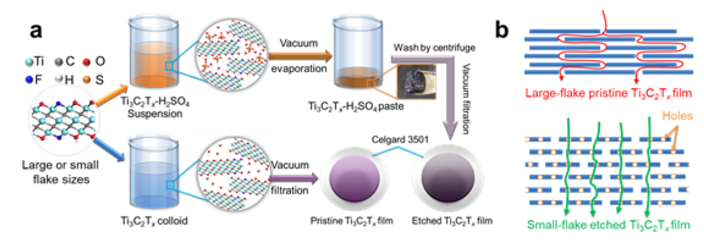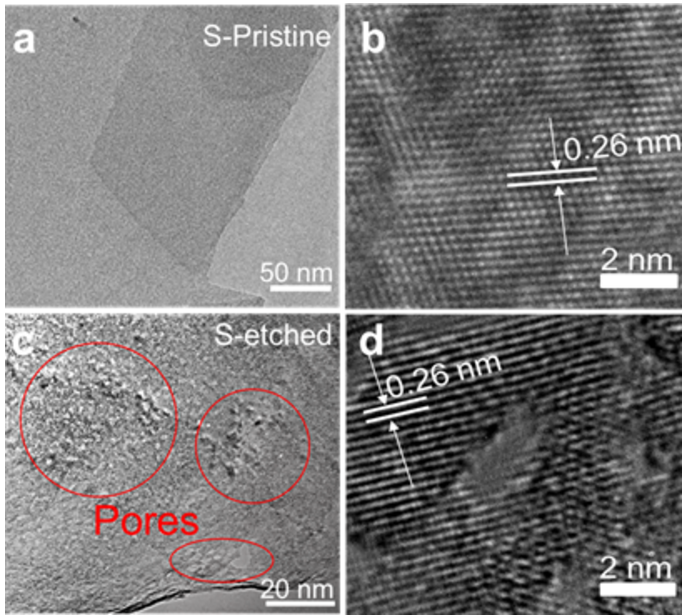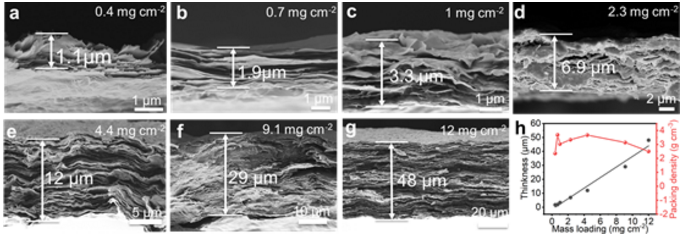
hotline:
17715390137
Tel/Wechat:
18101240246 (Technology)
0512-68565571
Email:mxenes@163.com (Sales Engineer)bkxc.bonnie@gmail.com
Scan the code to follow or search the official account on WeChat:
2D Materials Fronrier After paying attention,
click on the lower right corner to contact us,
Enter enterprise WeChat.
Professional Services Online



Transition metal carbides, nitrides and carbonitrides (MXenes) are a class of rapidly developing 2D materials that have been extensively studied in many different application fields, such as energy storage, electromagnetic shielding, transparent conductive electrodes, environment and water Processing, catalysis, sensors and biochemical applications, etc. Ti3C2Tx is the first MXene material reported and the most in-depth study, especially in the field of supercapacitors, which can have excellent proton-induced pseudocapacitance in acidic electrolytes. The high electronic conductivity of up to 15,000S cm-1, high tap density (up to 4 g cm-3) and high pseudocapacitance (1500 F cm-3) make Ti3C2Tx superior to other materials. However, Ti3C2Tx electrodes will produce longer ion transport channels due to the stacking of 2D materials, resulting in ultra-low rate performance. When applied to the power supply of electronic devices with high area energy density and high magnification, the MXene electrode must be thick enough to ensure a high charge storage capacity.
In order to alleviate the problem of Ti3C2Tx film electrode restacking, researchers have proposed many strategies, including typical interlayer embedding of graphene, carbon nanotubes or other nanomaterials, pillar structure design, template sacrificial method, vertical arrangement and engraving. Eclipse etc. However, although most of the reported methods can improve the rate performance, the overall volume capacitance is sacrificed due to the introduction of inactive materials, excessively large spacing or active materials with low volume capacitance. Considering the effect of oxidation on the performance improvement, the chemical oxidation process is considered to be an efficient method suitable for mass preparation of porous Ti3C2Tx.

Recently, Professor Pan Feng from Peking University Shenzhen Graduate School, Professor Xu Baomin from Southern University of Science and Technology and Professor Yury Gogotsi from Drexel University in the United States jointly published the title of Optimizing Ion Pathway in Titanium Carbide MXene for Practical High- in the internationally renowned academic journal Advanced Energy Materials. The research paper of Rate Supercapacitor reported a new, simple and controllable concentrated H2SO4 oxidation method, which prepared porous, small-sheet Ti3C2Tx membrane electrodes without low electrochemical activity by-products (such as TiO2). The re-stacking problem is alleviated, and excellent capacitance performance is obtained.


Picture summary. Before and after optimization, comparison of the rate performance of Ti3C2Tx film electrode supercapacitor.

Figure 1. Schematic diagram of the concentrated H2SO4 etching process and hierarchical nanoporous structure of Ti3C2Tx nanosheets.

Figure 2. Morphology and structural changes of Ti3C2Tx nanosheets etched by concentrated H2SO4.

Figure 3. The morphology and structure changes of Ti3C2Tx after etching.

Figure 4. Comparison of electrochemical performance of Ti3C2Tx film before and after etching.

Figure 5. The relationship between area mass load and film thickness.

Figure 6. The electrochemical performance of S-Ti3C2Tx film with different thicknesses.

This article reported for the first time that Ti3C2Tx nanosheets were partially etched by controlling the oxidation of H2SO4, and only a small amount of by-products that were not electrochemically active sites were produced. The structure-optimized Ti3C2Tx film electrode realized by concentrated sulfuric acid etching combined with probe ultrasound can still produce ultra-high electrochemical performance under the condition of high-quality load, which proves the reduced chip size and small chip size. Holes and expanded interlayer spacing (atomic size) are three key factors for MXenes to alleviate the restacking problem without sacrificing volumetric capacitance at high rates. What is worth looking forward to is that this method can be applied to the improvement and performance enhancement of other MXene materials.
Literature link:
https://onlinelibrary.wiley.com/doi/pdfdirect/10.1002/aenm.202003025

| Reminder: Beijing Beike New Material Technology Co., Ltd. supplies products only for scientific research, not for humans |
| All rights reserved © 2019 beijing beike new material Technology Co., Ltd 京ICP备16054715-2号 |